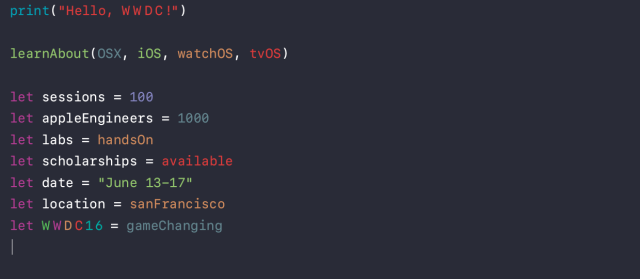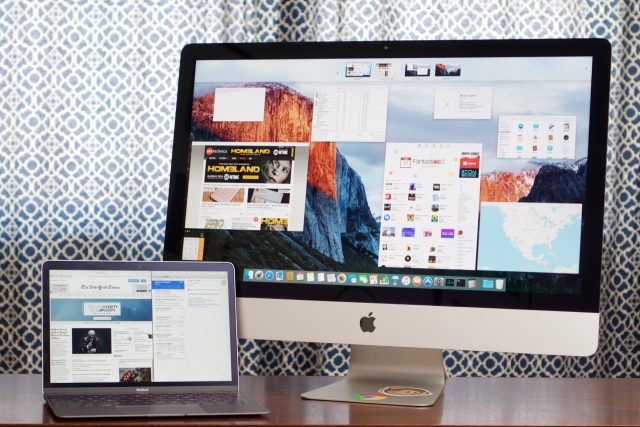
Apple’s Worldwide Developers Conference kicks off on Monday, and it all begins at 10am Pacific at the Bill Graham Civic Auditorium in San Francisco. While the bulk of the actual developer sessions will be happening at the nearby Moscone Center, Apple has moved the opening-day keynote to a larger venue to make room for more attendees.
Even given the iPhone announcements in the fall, WWDC is usually Apple's biggest event of the year, the one where we see the direction in which Apple's increasingly unified platform is moving for the next 12 months. We already know that we'll be getting our first looks at new versions of iOS, OS X, watchOS, and tvOS, and the show is often good for a handful of product and service announcements as well as some more developer-focused stuff.
Let's run down what we know (and what we think) is coming this year, taking all the most recent grist from the rumor mill into account. Reliable rumors are less plentiful this year than they have been in the past, which means that whatever else happens, this may well be the most surprising Apple keynote we've had in quite a while.
iOS 10

According to a report from The Information last month (paywall), Apple should finally make an API for Siri available for third parties to hook into, part of a broader effort to take the digital assistant in a more Google-Now-and-Amazon-Echo-esque direction. Apple is sometimes slow to offer developers access to different parts of the operating system (examples: browsers can't use their own rendering engines, you can't set third-party apps as defaults), but both iOS 8 and iOS 9 were big steps forward. Sharing data directly between apps, using third-party keyboards, and searching within apps using Spotlight are just a few of the things developers can do now that they couldn’t do in iOS 7.
ITunes metadata also suggests that the ability to hide unused first-party iOS apps may be coming—a blessing to anyone with a dedicated "Apple junk" folder on their devices now. Currently, the iCloud Drive app can be hidden and shown based on user preference, but everything else is permanent.
Aside from that, information about what might be coming in iOS has been hard to come by—few rumors have focused on potential new features, making speculation more difficult than it normally is.
Here's what we can guess: first, it's almost certain that all hardware with an Apple A5 or A5X chip in it (so the iPhone 4S, iPad 2, first-gen iPad Mini, the fifth-gen iPod Touch, and the iPad 3) is going to be dropped from the support list. Those CPUs and GPUs are feeling mighty slow five years later, and working with that 512MB RAM limit is painful for users and developers alike.
There's also a non-zero chance that the 32-bit A6 (iPhone 5 and 5C and iPad 4) could be dropped in favor of making iOS all 64-bit. But those devices still feel reasonably fast, and they all have the same 1GB of RAM that many of the 64-bit devices have, so I wouldn't be surprised if they hung around for another year before disappearing.
The WWDC app this year uses a light-on-dark theme, the sort of thing that a vocal subset of iOS users has been asking for since iOS 7 covered everything with a bright white coat of paint. The WWDC app often provides a subtle hint about what Apple is planning (it had a "flat" theme the year iOS 7 was introduced, and it was coded using Swift the year after that), so an OS-wide dark theme could be in the cards.
And you can expect Apple to continue paying special attention to the iPad and iPad Pro. Hopefully the company revisits the decidedly first-generation multitasking interface from iOS 9, but what we'd especially like to see is a public version of the multi-user mode Apple introduced to the education market in iOS 9.3. The iPad keeps getting more Mac-like, and a multi-user mode is a logical step down that path.
Aside from that, expect the normal spit-and-polish efforts that accompany new versions of any mature operating system. Developer betas are typically available for download the day of the WWDC keynote, and last year Apple offered public betas of iOS 9 within a few weeks.
OS X (or MacOS?) 10.12

Siri is said to be a banner feature for the new version of OS X this year, which would only make sense. It's available on iOS, watchOS, and tvOS—the only real question is why it isn't on the Mac already. Continued additions and improvements to the Continuity features that tie iOS and OS X together could be in the cards, too. MacRumors suggests that Apple is working on a feature that could let you unlock your Mac with a TouchID-compatible iPhone that’s in “close proximity” (presumably Bluetooth range, since that’s what a lot of Continuity features hinge on).
If you’re the sort of person who finds branding interesting, there are also some suggestions that Apple could be shifting away from the 15-year-old OS X branding in favor of “MacOS.” This would bring the desktop platform in line with iOS, tvOS, and watchOS; sometimes you have to move back to go forward. And in addition to cleaning up the software naming scheme, a rebranded “MacOS” could provide Apple with an opportunity to move beyond the “OS X” branding without officially declaring that we’ve hit a release big enough to call “OS XI.”
Update: And here's another "macOS" reference, this time with a clearly intentional lowercase "mac" to better blend with iOS, watchOS, and tvOS. This looks like a pretty sure thing at this point.
Otherwise, expect the standard smattering of OS and app tweaks; rumors suggest that Apple will be paying special attention to the Apple Music experience in iTunes and also the Photos app, while possibly introducing some sort of browser-based implementation of Apple Pay.
We don't know what to expect from the support list; Apple hasn't dropped support for any Macs since Mountain Lion was released in 2012. In the past, it was usually obvious why older Macs were being dropped—Apple got rid of PowerPC Macs in Snow Leopard, 32-bit Intel Macs in Lion, and Macs without 64-bit EFI and graphics drivers in Mountain Lion—but the current Mac support list is composed of all-Intel machines with fully 64-bit drivers and EFI implementations. That's not a guarantee that Apple will keep supporting some of those older Macs from before the turn of the decade, but there's no big obvious cutoff line, either.
watchOS and tvOS
Apple has already said that its wrist- and TV-bound hardware is getting some software attention at WWDC, but as of this writing, there’s no information at all about what either software update might deliver. There’s some logic to this—by design, both platforms are much simpler and more focused than either iOS or OS X, so any changes will be less wide-ranging.
What both the Apple Watch and Apple TV need more than anything (aside from a hardware update, in the watch’s case) is more third-party support, and to attract that support Apple could decide to give developers more freedom.
In WatchOS, that means custom watch faces and apps that run directly on the watch’s hardware in order to improve speed and consistency. On the TV, that means removing damaging limitations like requiring that every game that wants to ship with gamepad support still needs to support some kind of wonky Siri Remote controls. It could mean opening Siri up on the watch and the Apple TV as well as the iPhone, allowing developers (and thus users) to do more with it. It could mean tighter integration between your watch, Mac, phone, and set-top box, or pushing different kinds of apps (productivity apps, perhaps) on the Apple TV especially. In any case, more freedom is the first step.
reader comments
108